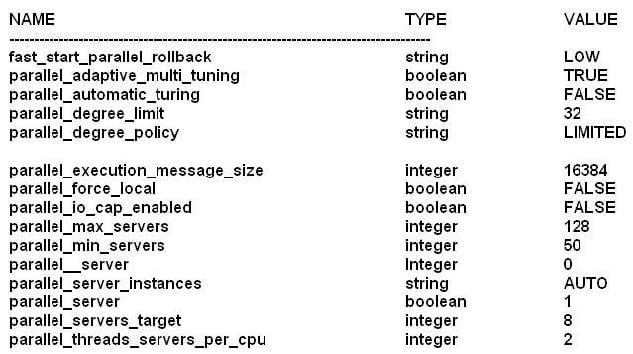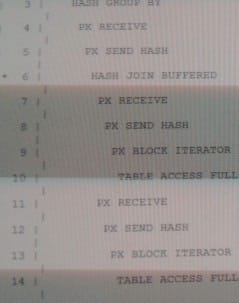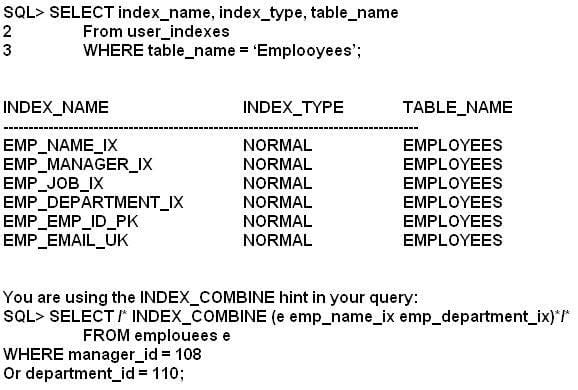
1Z0-117 Exam Questions & Answers
Exam Code: 1Z0-117
Exam Name: Oracle Database 11g Release 2: SQL Tuning Exam
Updated: Nov 17, 2024
Q&As: 125
At Passcerty.com, we pride ourselves on the comprehensive nature of our 1Z0-117 exam dumps, designed meticulously to encompass all key topics and nuances you might encounter during the real examination. Regular updates are a cornerstone of our service, ensuring that our dedicated users always have their hands on the most recent and relevant Q&A dumps. Behind every meticulously curated question and answer lies the hard work of our seasoned team of experts, who bring years of experience and knowledge into crafting these premium materials. And while we are invested in offering top-notch content, we also believe in empowering our community. As a token of our commitment to your success, we're delighted to offer a substantial portion of our resources for free practice. We invite you to make the most of the following content, and wish you every success in your endeavors.

Download Free Oracle 1Z0-117 Demo
Experience Passcerty.com exam material in PDF version.
Simply submit your e-mail address below to get started with our PDF real exam demo of your Oracle 1Z0-117 exam.
![]() Instant download
Instant download
![]() Latest update demo according to real exam
Latest update demo according to real exam
* Our demo shows only a few questions from your selected exam for evaluating purposes
Free Oracle 1Z0-117 Dumps
Practice These Free Questions and Answers to Pass the Oracle Database Exam
An application accessing your database got the following error in response to SQL query:
ORA-12827: insufficient parallel query slaves available
View the parallel parameters for your instance:

No hints are used and the session use default parallel settings.
What four changes could you make to help avoid the error and ensure that the query executes in parallel?
A. Set PARELLEL_DEGREE_POLICY to AUTO.
B. Increase the value of PARELLEL_MAX_SERVERS.
C. Increase PARELLEL_SERVERS_TARGET.
D. Decrease PARELLEL_MIN_PERCENT.
E. Increase PARELLEL_MIN_SERVERS.
F. Decrease PARELLEL_MIN_TIME_THRESHOLD.
G. Increase PARELLEL__MIN_TIME_THRESHOLD.
Examine the exhibit to view the query and its execution plan?

What two statements are true?
A. The HASH GROUP BY operation is the consumer of the HASH operation.
B. The HASH operation is the consumer of the HASH GROUP BY operation.
C. The HASH GROUP BY operation is the consumer of the TABLE ACCESS FULL operation for the CUSTOMER table.
D. The HASH GROUP BY operation is consumer of the TABLE ACCESS FULL operation for the SALES table.
E. The SALES table scan is a producer for the HASH JOIN operation.
Which two are the fastest methods for fetching a single row from a table based on an equality predicate?
A. Fast full index scan on an index created for a column with unique key
B. Index unique scan on an created for a column with unique key
C. Row fetch from a single table hash cluster
D. Index range scan on an index created from a column with primary key
E. Row fetch from a table using rowid
View the code sequence:

Which three statements are true about the execution of this query?
A. The optimizer uses an index join as an access path.
B. The optimizer uses a B* tree access path for the EMPLOYEES table.
C. The optimizer uses a bitmap access path for the EMPLOYEES table.
D. The optimizer performs bitmap conversion from row IDs.
E. The optimizer performs bitmap conversion to row IDs of the combined maps.
F. The optimizer performs bitmap conversion from the row IDs of the combined maps.
Which three factors does the estimator depend on for overall cost estimation of a given execution plan?
A. Cardinality
B. Sort area size
C. OPTIMIZER_FEATURE_ENABLE parameter
D. NOT NULL_FEATURE_ENABLE parameter
E. NOT NULL constraint on a unique key column
F. Library cache size
G. The units of work such as disk input/output, CPU usage, and memory used in an operation
Viewing Page 1 of 3 pages. Download PDF or Software version with 125 questions

